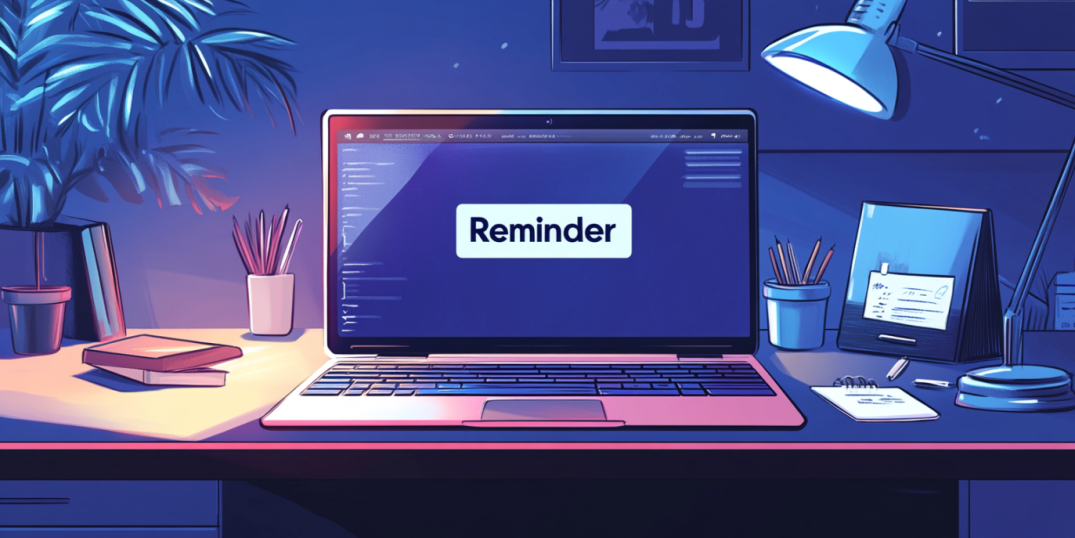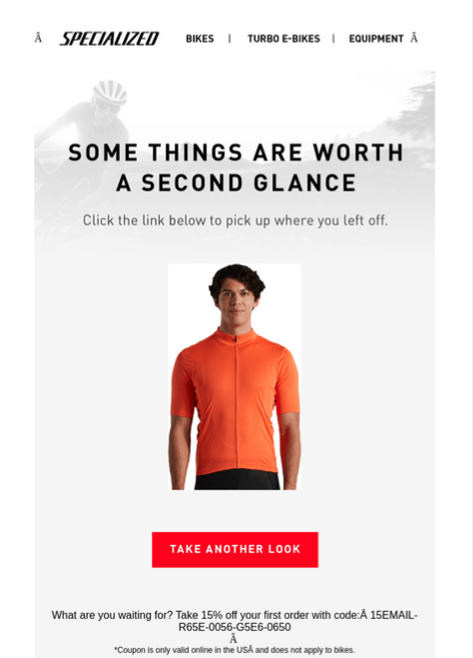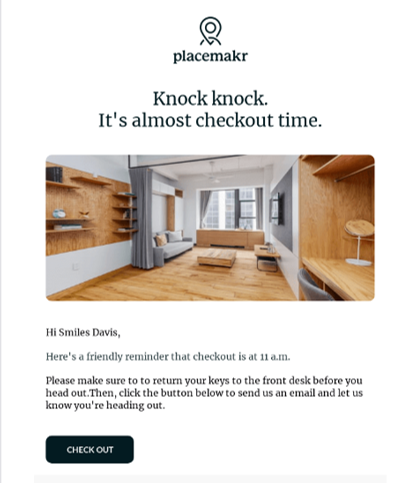- Home
- Email Tips and Tricks
- Reminder Emails: How to Effect ...

Schedules for most people are fully packed. Working appointments, meeting with friends, anniversaries, holidays, shopping—the list of things we need to do is never-ending. Even with digital calendars and planners, it’s easy to forget important dates or tasks. That’s where a reminder email can become a helpful nudge and prevent you from missing an important date.
But it’s not just about keeping things organized for individuals—reminder emails also help businesses. A well-crafted, kind reminder email can be really helpful for the recipient’s timekeeping. When written and sent in the right way, these messages ensure that important actions are taken without feeling too pushy. This, in turn, makes customers feel grateful and appreciative of business efforts, nurturing long-term relationships.
In this article, we’ll explore how to write a reminder email that gets the job done while keeping the tone friendly and professional.
Why Reminder Emails Are Essential
Deadlines, payments, important dates—these are the things we all forget about from time to time. So, sending a reminder email before some of those key moments can be something people are really grateful for. After all, a quick prompt can prevent late payment penalties or save someone from losing access to their favorite online magazine.
But beyond just being helpful, reminder emails are a powerful tool for businesses. When done well, they maintain a positive relationship between you and your audience. In fact, reminder emails can often feel like a service rather than a sales tactic. When you’re thoughtful about how to word your message, it can come across as considerate and caring. Take a professional reminder email for subscription renewal, for example. Instead of simply stating, “Your subscription is ending,” a well-crafted message might say, “We noticed your subscription is coming to an end soon, and we wouldn’t want you to miss out on your favorite features!” This approach feels helpful and gives the recipient a reason to appreciate the communication.
And let’s not forget the impact these emails can have on your business’s bottom line. Abandoned cart reminders, for instance, often lead to a substantial recovery of lost sales. In the end, the cart abandonment rate reached 70% in 2023 among online shoppers, pointing to the fact that there’s a lot of room for improvement in this department. By gently prompting action, you are helping your customers on the one hand while boosting your revenue on the other.
Common Types of Reminder Emails
1. Event reminders
We’ve all signed up for events and then forgotten about them. That’s where an event reminder email might be really useful. These emails are usually sent a few days or even hours before an event, giving people a polite heads-up so they don’t miss it. A friendly reminder email example for an event might be,
“Just a quick note to remind you of tomorrow’s webinar! We can’t wait to see you there.”
It’s both informative and warm and makes sure your audience feels excited rather than rushed.
2. Payment reminders
Nobody enjoys missing a payment, especially when it results in a late fee. A professional reminder email is a helpful nudge that ensures customers remember to settle their dues on time. You can keep it polite but firm:
“Just a kind reminder that your invoice is due on 2025. Please make sure to complete the payment to avoid any interruptions.”
By mentioning that there might be unwanted consequences, you prevent customers from possible fines and yourself—from a lost payment.
3. Abandoned cart reminders
Abandoned carts are a common headache in e-commerce, but a gentle reminder email can work wonders in bringing back customers who left items behind. A friendly, engaging message such as,
“It looks like you forgot something! Your cart is waiting for you,”
paired with a small incentive like free shipping, is often all it takes to nudge customers toward completing their purchase. These emails are best when personalized and sent soon after the cart was abandoned.
4. Deadline reminders
Deadlines sneak up on everyone, whether it’s for a project, a registration, or a limited-time offer. A polite reminder email can give people the push they need without adding extra pressure. A simple message like,
“Just a quick reminder that the deadline for [event/task] is approaching on 2025”
keeps things polite yet urgent. These types of reminders are helpful as they help people to avoid the last-minute rush.
5. Subscription renewal reminders
When a subscription is about to expire, a subscription renewal reminder email can ensure users don’t lose access to services they rely on. It’s important to make these emails clear and helpful, but also with a hint of excitement.
“Heads up! Your subscription to [service] ends soon. Renew now to keep enjoying [feature] uninterrupted.”
In the end, we all hate getting this “Your subscription expired” just when we were about to watch another episode of our favorite show.
Key Elements of an Effective Reminder Email
Clear and direct subject line
The subject line is the first thing your recipient sees, so it should immediately translate the purpose of the email. Avoid vague language—be direct, but stay polite nonetheless. For example, like this:
“Reminder: Payment Due Tomorrow” or “Upcoming Event: Don’t Miss Out!”
Professional yet friendly tone
It’s important to strike the right tone in a professional reminder email. You want to be polite, but there’s no need to apologize or be overly formal. Be clear about the purpose of your email while maintaining a friendly approach.
Timing is key
The timing of your reminder email is crucial. For more urgent matters, like tight deadlines or payments, it’s best to send a reminder within 24 hours of your initial communication. This ensures your message stays relevant and top of mind. However, for less urgent issues—such as event RSVPs or subscription renewals—you can wait a few days before sending a polite reminder email.
Include all relevant information
Every reminder email should include the critical details your recipient needs to take action. Be sure to mention the specific date, time, amount (for payments), or next steps required. Having all the relevant information in one place makes it easy for the recipient to act quickly without needing to look for details somewhere else.
Add a call to action (CTA)
A clear call to action is essential for guiding the recipient toward the desired outcome. No matter the purpose of your reminder email, its CTA should make it easy to act upon.
Examples of Effective Reminder Emails
Event reminder example
This webinar reminder email does a great job engaging its recipients with a friendly and welcoming tone. It has a simple and catchy subject line that reminds people of their registration. Here, it sounds like, “We are looking forward to seeing you,” rather than “Do you remember that you registered a week ago?” The message highlights the value of the webinar by pointing out topics that are relevant to the audience, making it clear why attending is important.
It also has all the important details included, such as the time, date, and platform.
Its “Webinar link” CTA makes joining the webinar very easy. Same goes to providing helpful instructions on connecting to Zoom, which removes any potential tech-related stress.
Payment reminder example
This reminder talks about sensitive things in an open and relatable way. It opens with a simple but important question: “Is your payment information up to date?” rather than bombarding the recipient with formalities.
It does not demand information but gently reminds about possible changes over time. All the key information is right there, including the renewal date and the clear “Learn more” CTA, which is definitely helpful for updating the billing details quick and easy. The tone remains casual but professional, helping recipients feel supported and not pressured.
Cart abandonment reminder example

This abandoned cart reminder email gently nudges the recipient back to their shopping cart. “Some things are worth a second glance” invites recipients to think about things that are worth thinking about, like clothing.
A clear and bright CTA “Take another look” makes it easy for a recipient to continue where he left. Same goes to the added bonus of a 15% discount, which adds a little extra motivation.
This email reminder altogether looks and feels non-intrusive yet sticks with its positivity and overall simple but bright color scheme.
Deadline reminder example

To Sum Up
In this article, we explored the art of creating reminder emails and figuring out what makes them not just good but actually effective and memorable. What is the secret here? It is all in how you balance the message. You’re not just reminding someone—they already know, after all—you’re offering them convenience, making their life easier with a subtle prompt at just the right time. Whether it’s a checkout email, an event they’re looking forward to, or an expiring subscription, a reminder email is your chance to step in in the right way and at the right time.
So next time you’re creating a reminder, think beyond the basics. Make it short, make it clear, and make it count. Because in the end, a good reminder email isn’t about getting someone to do something, but it is about keeping your connection with people alive.



